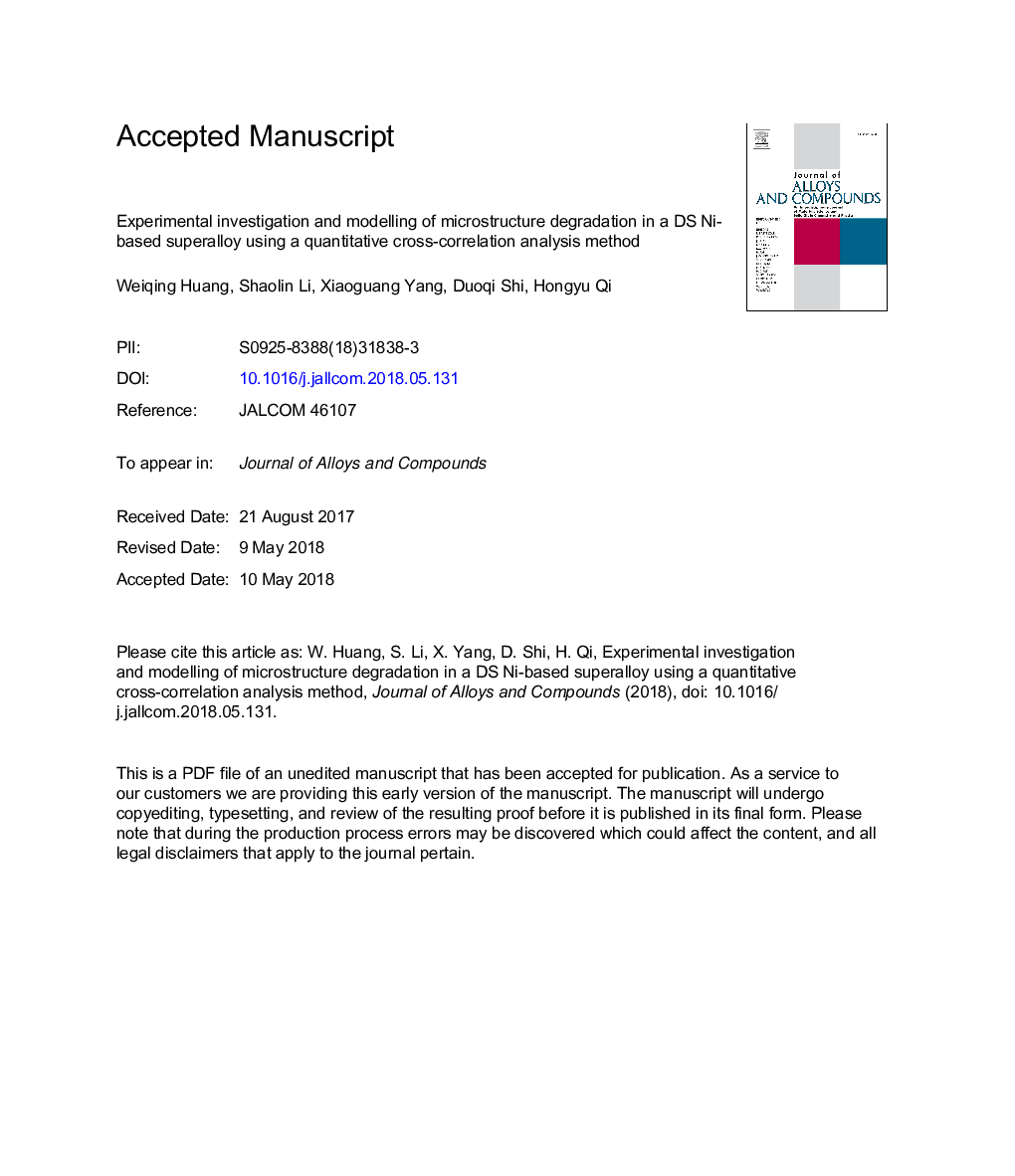| Article ID | Journal | Published Year | Pages | File Type |
|---|---|---|---|---|
| 7991054 | Journal of Alloys and Compounds | 2018 | 43 Pages |
Abstract
In their operating environments, turbine blades usually suffer from microstructural degradation and a corresponding reduction in mechanical performance. Load-free and load-assisted experiments were conducted to determine the microstructural degradation kinetics of a directionally solidified (DS) Ni-based superalloy, DZ125, commonly applied as a first-stage blade material in aero-engines. The results show that a transition time from the linear law to the power law exists during isotropic coarsening in load-free testing. The directional coarsening behaviour of DZ125 under load-assisted intensifies with the increase in exposure temperature and applied stress. A unified analytical model for γⲠprecipitate evolution of DZ125 superalloys, based on Lifshitz-Slyozov-Wagner (LSW) theory, was proposed to predict the experimentally observed increase in the coarsening extent associated with increase in temperature, time, and applied stress. Microstructural information, such as γⲠprecipitate width and channel width in modelling work, was extracted using the cross-correlation analysis algorithm. The model can accurately estimate the γⲠprecipitate evolution of DS DZ125 superalloys. In addition, based on the model, the analytical process derived for evaluating the service temperature and stress field of turbine blades was verified by data pertaining to the trailing edge of a turbine blade.
Related Topics
Physical Sciences and Engineering
Materials Science
Metals and Alloys
Authors
Weiqing Huang, Shaolin Li, Xiaoguang Yang, Duoqi Shi, Hongyu Qi,
